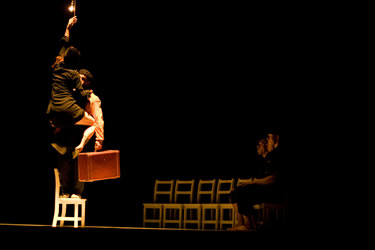 To honor the 250th anniversary of Ludwig van Beethoven’s birth, the Winston-Salem Symphony, as part of its 40th anniversary season, chose to dedicate an entire program to the composer. Under the direction of Timothy Redmond, the orchestra adapted to current times with a livestreamed performance on a smaller scale. Featuring a trombone quartet and a string sextet from the orchestra’s members, the concert was a wonderful tribute to some of Beethoven’s music.
To honor the 250th anniversary of Ludwig van Beethoven’s birth, the Winston-Salem Symphony, as part of its 40th anniversary season, chose to dedicate an entire program to the composer. Under the direction of Timothy Redmond, the orchestra adapted to current times with a livestreamed performance on a smaller scale. Featuring a trombone quartet and a string sextet from the orchestra’s members, the concert was a wonderful tribute to some of Beethoven’s music.
One of Beethoven’s less-performed works, Drei Equali, for four trombones (WoO 30), opened the concert with sonority. Trombonists Brian French, Seth Frack, David Wulfeck, and Erik Salzwedel emulated a resonant choir with the homophonic and dynamically controlled texture. Although this work belongs to a relatively somber genre, it remains in a major tonality most of the time, and the Winston-Salem Symphony’s quartet played with poise in this lovely companion piece to the Sixth Symphony.
How can the brilliance and depth of a full symphony orchestra be condensed into six string instruments? Hearing the Winston-Salem Symphony players without seeing the video, unsuspecting listeners might assume that they were hearing the entire orchestra, or at least, more than six string players. (One of my family members remarked on this from the other room, at least!) M. G. Fischer’s arrangement of Beethoven’s Symphony No. 6, published in 1810 (the same year the original Symphony was published), made Beethoven’s marvelous work accessible to homes and other intimate settings in the early 19th century, and somewhat ironically, it is making Beethoven’s pastoral musings accessible to us now.
Two violinists, concertmaster Corine Brouwer and Fabrice Dharamraj, violists Simon Ertz and Kristen Beard, and cellists Ryan Graebert and Blake Kitayama played with confidence and absolutely synchronicity (as, of course, no conductor was present). The first movement heard all of Beethoven’s lyrical melodies teased out by individual instruments, in a way that made each phrase easier to pinpoint, since there were only six players on which to focus. This fact remained, naturally, through the whole performance, shedding light on new facets of the 6th Symphony.
Aside from the music itself, credit must be given to videographer Gregg Jamback and sound engineer Frank Martin, who helped provide a seamless concert experience. In addition to the regular viewing angles, the camera view occasionally zoomed in behind the musicians’ shoulders to remind viewers that the sextet was playing from the very first edition of Fischer’s score, thanks to the Moravian Music Foundation. Meticulous attention was given, too, to audio quality and balance.
The unmistakable “Scene by the brook” (Andante molto mosso) featured cellos as basses, driving underneath rippling melodies in the violins and violas. Brief moments of minor tonality (there were only a few) were surprisingly beautiful, as were the flowing arpeggios that characterize the movement. The bird calls at the second movement’s conclusion lead into the driving, downhill motive of the third; this “Merry gathering of villagers” contained the same boisterous force in six as in twenty or more. The gently syncopated melody was traded among the sextet, first in the violin and then the cello
The thunderstorm struck, with the cellos in full tremulous force as thunder and lightning strikes from one or two of the instruments at a time. The collective energy from the sextet was really unmistakable here, and was just as much a joy to listen to as it must have been to play. The organic dismissal of the storm begins the final movement (Allegretto, or “Shepherd’s Song”). Both violins and one viola held the rapid tremolo above the triumphant melody, holding a delicate balance. The beauty of the sextet’s resounding major chords that conclude the Symphony made me want to rewind and listen again. Thankfully, this performance is available to ticket holders through mid-January. See our sidebar for a link to the site.











